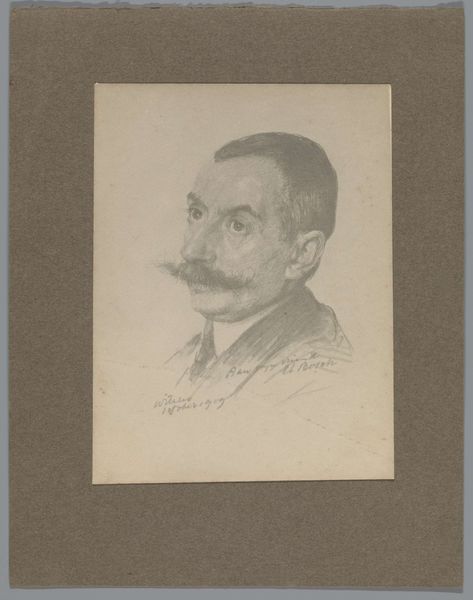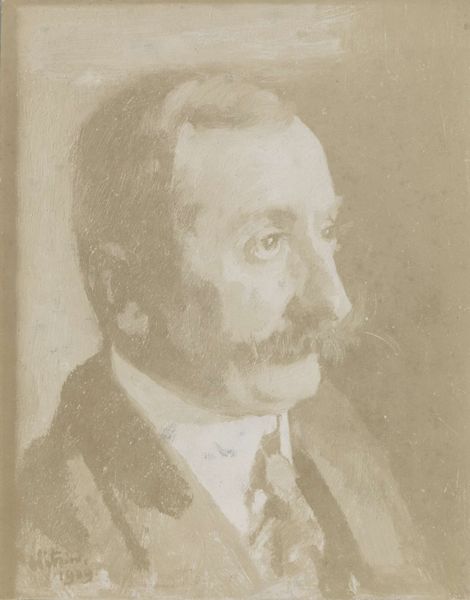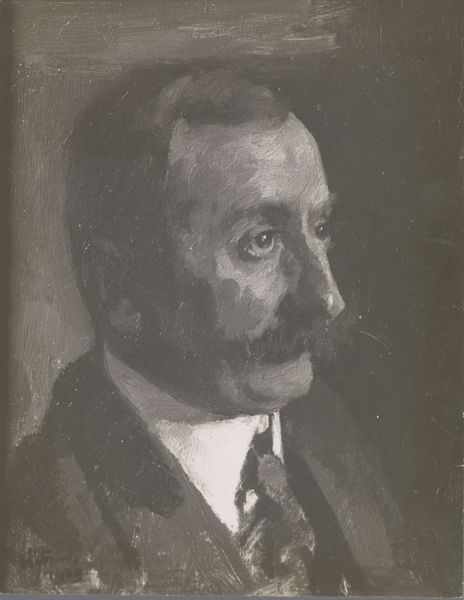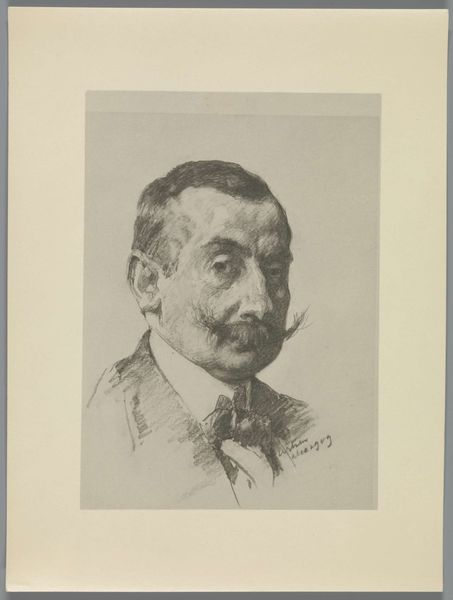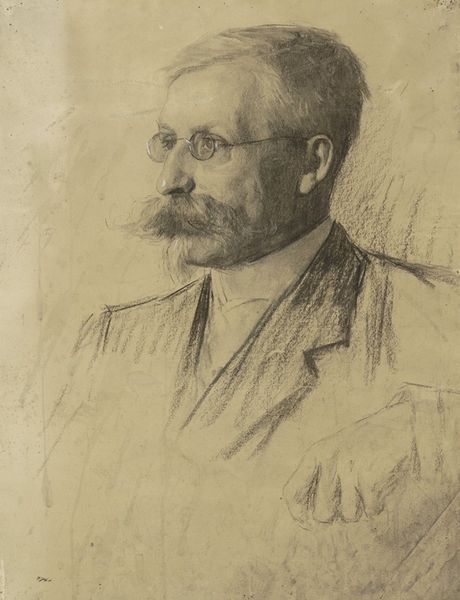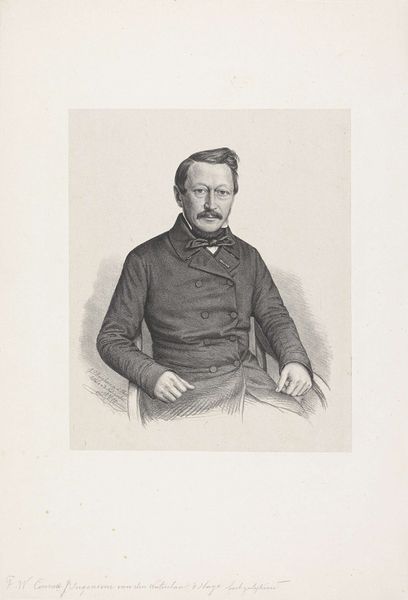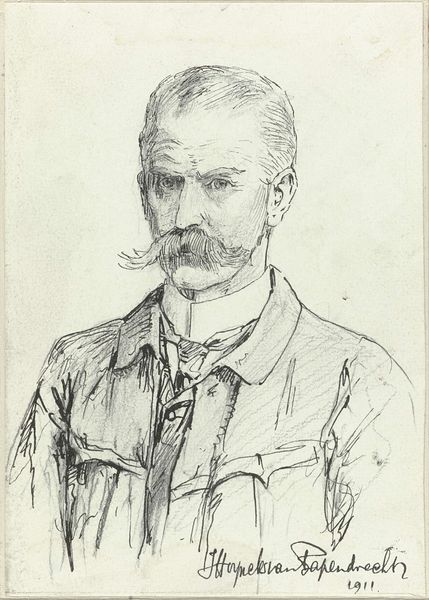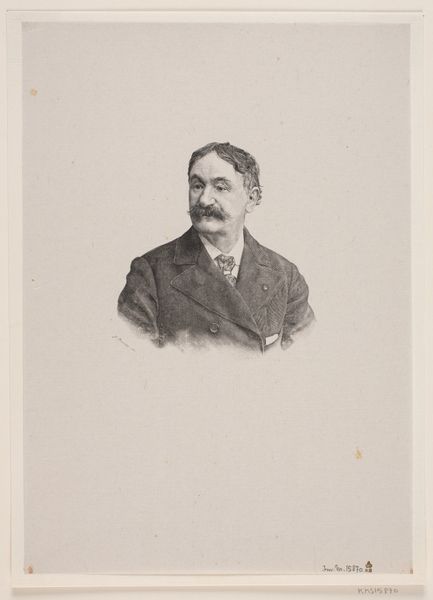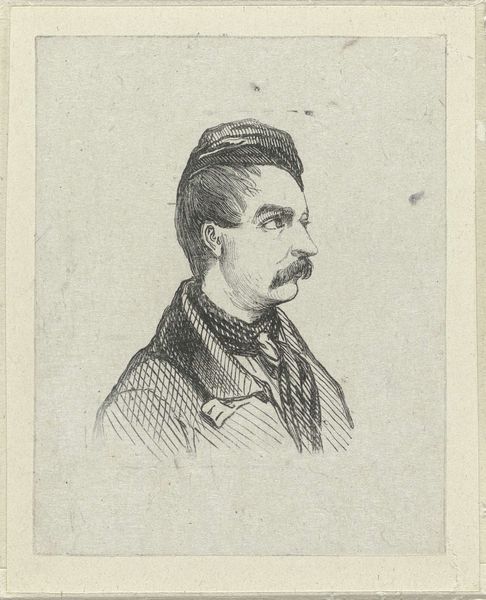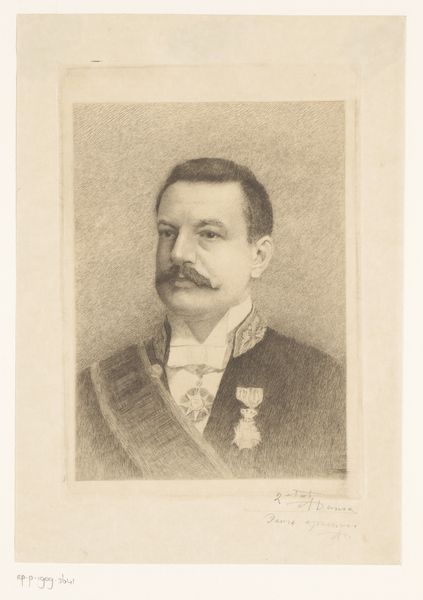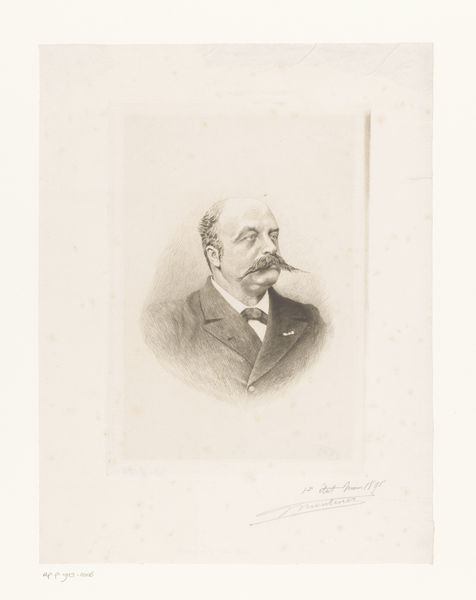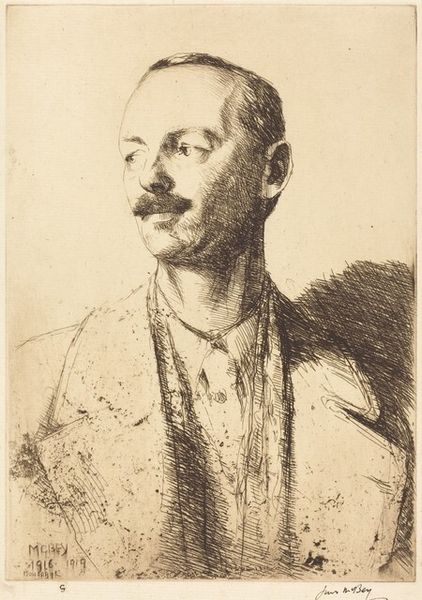
Reproductie naar een foto, schilderij, tekening of prent c. 1860 - 1915
0:00
0:00
diversevervaardigers
Rijksmuseum
drawing, pencil, graphite
#
portrait
#
pencil drawn
#
drawing
#
pencil sketch
#
charcoal drawing
#
pencil drawing
#
pencil
#
graphite
#
portrait drawing
#
academic-art
#
realism
Dimensions: height 180 mm, width 140 mm
Copyright: Rijks Museum: Open Domain
Curator: This is "Reproductie naar een foto, schilderij, tekening of prent", a graphite and pencil drawing, made sometime between 1860 and 1915, from various makers, here at the Rijksmuseum. Editor: It's incredibly delicate. There's something about the lightness of the pencil work that gives it a tentative, almost ethereal quality. And that focused gaze, what do you make of that intensity? Curator: The interplay of light and shadow, primarily achieved through delicate hatching, defines the form. Note how the artist meticulously uses varied pressure to model the face, directing our gaze from the high forehead down across a strong, definite nose. Editor: I'm particularly drawn to the moustache—it seems to be the defining feature, a potent symbol of the era’s masculine ideal. But, the soft lines around the eyes hint at something more complex than just virility. What stories it could tell! Curator: Certainly, the detailed realism and stark simplicity of the drawing, its pure lines, capture the immediacy of academic art, prioritizing precise representation. The tonal variations alone establish volume, but beyond that there is an emotional depth through his gaze. Editor: It does have that compelling balance of straightforward presentation with more vulnerable elements that linger and deepen with consideration. And the moustache also reminds me a little of authority, but also perhaps of self-importance from the period? It seems very much of its time. Curator: Precisely. And looking at the overall compositional balance of line weight and negative space, there's such attention to the smallest subtleties—all of that works toward its representational truth. Editor: So it feels more than a snapshot. It reflects, subtly, the inner man along with a signifier of the period. Thank you. It’s amazing what is suggested by what the artist chose to leave implied in the piece. Curator: Indeed, and thank you. Considering its lines and tone, what it implies becomes far more impressive.
Comments
No comments
Be the first to comment and join the conversation on the ultimate creative platform.
